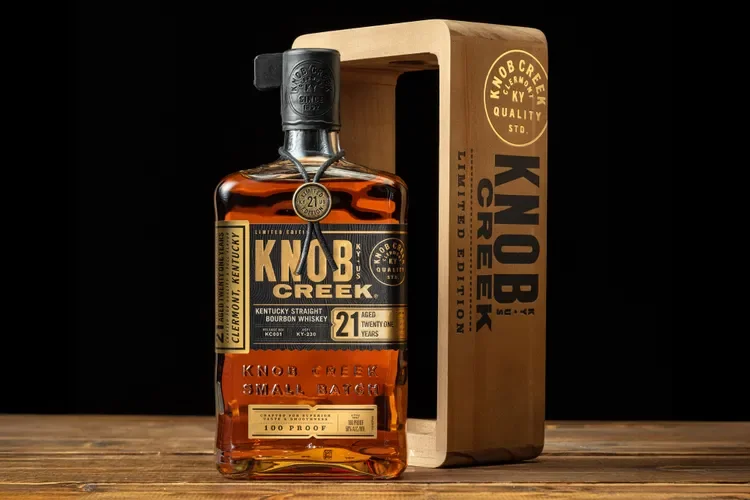When Age Becomes a Character — The Significance of Knob Creek’s 21‑Year Release
The bourbon world is storied, but few moments feel as significant as witnessing a brand lean into decades of ageing. With the launch of the Knob Creek 21‑Year Old, the James B. Beam Distilling Co. has positioned its Knob Creek label not just as another aged bourbon, but as a statement of legacy, patience and craft.
At 21 years, this is the oldest age‑stated bourbon ever released under the Knob Creek name. According to the brand, the barrels rested in lower rackhouse levels in Kentucky — where slower temperature swings and minimal extremes permitted the whiskey to evolve with balance, rather than simply absorb char and oak. Suntory Global Spirits+1 Bottled at 100 proof (50% ABV), the initial batch is priced around US $250 for a 750 mL bottle, and will be released in limited quantities nationwide. PR Newswire+1
Credit: Courtesy of Knob Creek Distilling Company
Why this matters
For one, the bourbon category has spent years oscillating between age‑statements, no‑age‑statements and scarcity. When a brand confidently steps into a multi‑decade age‑statement, it speaks to maturity in its inventory, stability in its brand and belief in its process. Consumers are handed a clear signal: the whiskey wasn’t rushed; time was allowed to do its work.
Secondly, from a craft‑perspective, ageing is not just about getting older, but about evolving flavour. Beam’s master distiller Freddie Noe explained that the bourbon develops “extraordinary depth, color and character that only 21 years in the barrel can bring.” Suntory Global Spirits In practice, barrels aged long benefit from volume loss (the so‑called “angel’s share”), reducing yield and raising cost — which makes the fact that Beam is releasing such a statement notable.
Third, for business strategy and positioning: at US $250, this bourbon straddles the line between accessible luxury and true luxury. Many ultra‑aged bourbons command four‑figure price tags or ultra‑limited distribution. Here, Beam appears to be opening the door to a broader whiskey‑enthusiast market while still leveraging rarity.
What to look for
When this bottle lands (or if you’re lucky enough to find one), it’s worth tasting with attention. Expect aromas of seasoned oak, caramelized sugar and subtle smoke; palate notes of deep caramel, toasted oak and a warm toffee finish. Jigger Daily In other words: a classic Beam profile elevated by time. For whiskey lovers, it becomes less about “what is the youngest part of the blend?” and more about “what has been allowed to mature, stay, evolve?”
Why this is good for the industry
In a market often driven by hype, allocation and scarcity, a release rooted in time and patience is welcome. It helps steer attention back toward the core of whiskey making: ageing, wood‑interaction, place, process. It also offers a signal that larger distillers — not just craft upstarts — see inventory strategy as long‑term. For brands, that’s a reminder: building for two decades takes more than just bold marketing; it takes barrels, time and faith.
Conclusion
For our Whiskey Workspace community — whether you’re building brands, advising distillers or simply enjoying pours — the Knob Creek 21‑Year Old release is more than just a bottle. It is a marker in bourbon history, a demonstration of inventory foresight and a challenge to think about how you ourselves allow things to age: ideas, teams, brands, barrels. Because time is the quiet ingredient in every great whiskey.


